Three identical plates of area A are arranged as shown. A charge +Q is given to plate (2). Then,
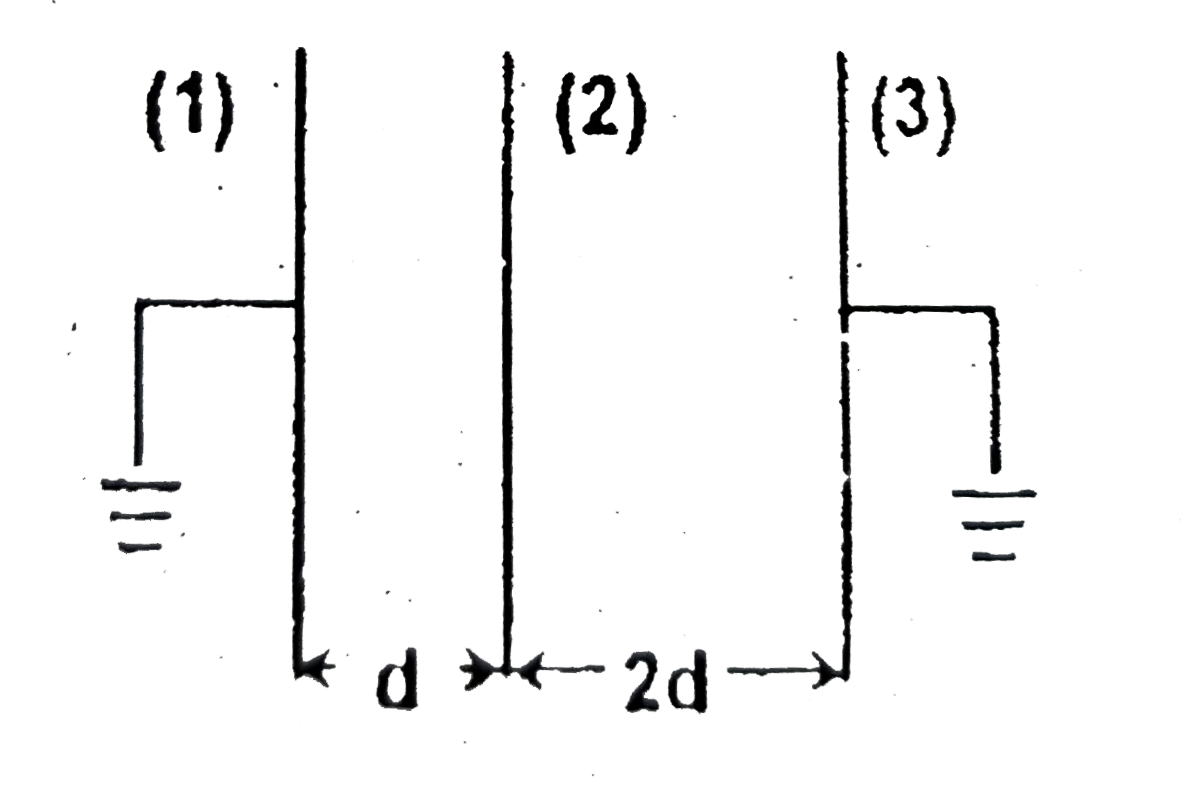
charge +2Q/3 appears on plate 1
charge −2Q/3 appears on plate 1
charge −Q/3 appears on plate 3
charge on two faces of plate 2 are 2Q/3 and Q/3
The system is equivalent to
q1C1=q2C2=q1+q2C1+C2
∴q1=C1QC1+C2.q2=C2QC1+C2
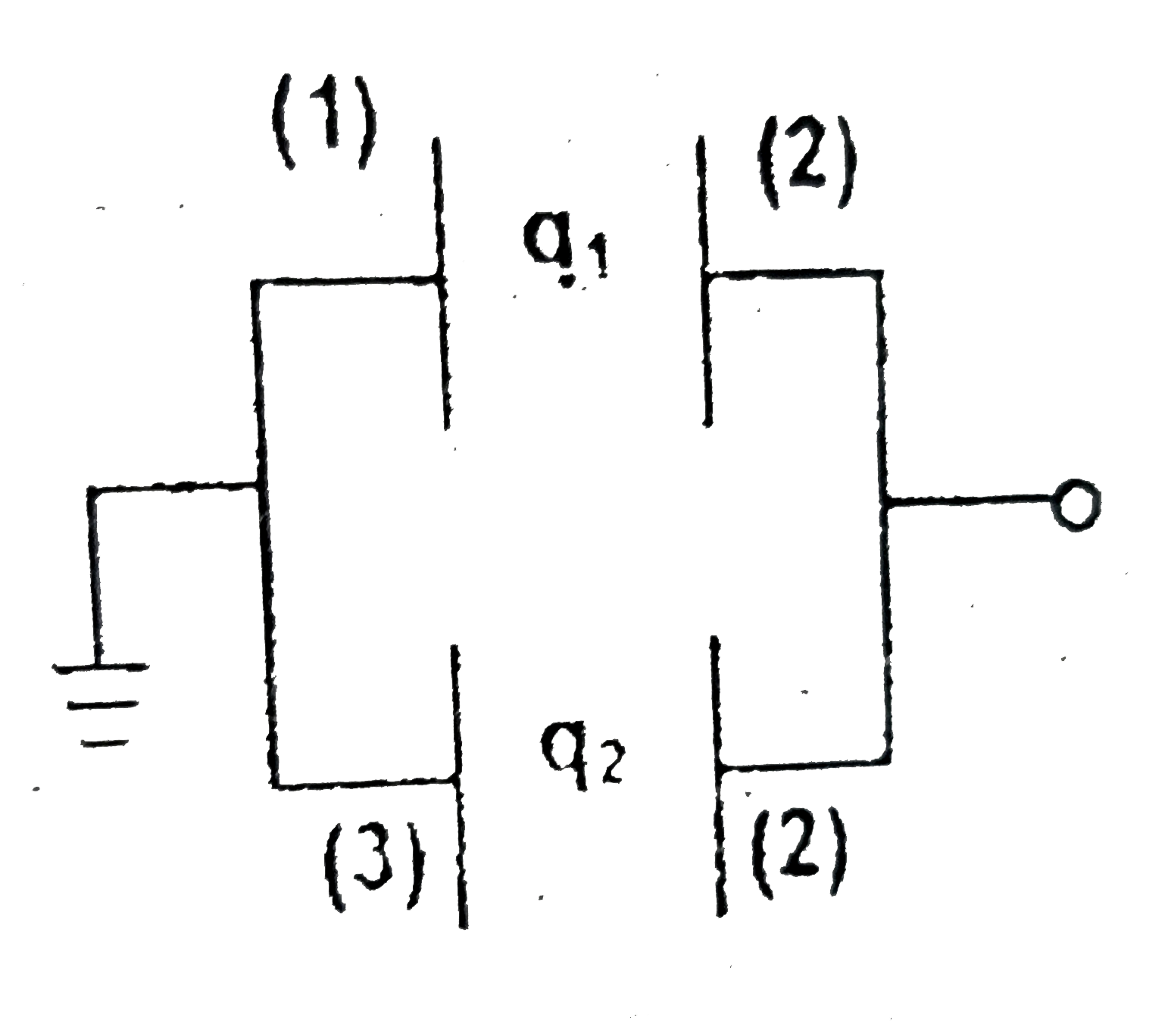
Topper's Solved these Questions
- GMP ASSESMENTBOOK - FIITJEECHAPTER - GMP ASSESMENTEXERCISE - Comprehension
58 Videos
- GMP ASSESMENTBOOK - FIITJEECHAPTER - GMP ASSESMENTEXERCISE - Numerical Based
61 Videos
- GMP ASSESMENTBOOK - FIITJEECHAPTER - GMP ASSESMENTEXERCISE - Assertion & Reason
15 Videos
- GENERAL PHYSICSBOOK - FIITJEECHAPTER - GENERAL PHYSICSEXERCISE - MATRIX MATCH TYPE
3 Videos
- GRAVITATIONBOOK - FIITJEECHAPTER - GRAVITATIONEXERCISE - Numerical based Question
2 Videos
Similar Questions
Knowledge Check
Five identical plates each of area A are joined as shown in the figure. The distance between the plates is d. The plates are connected to a p.d. of V volts . The charges on plates 1 and 4 will be
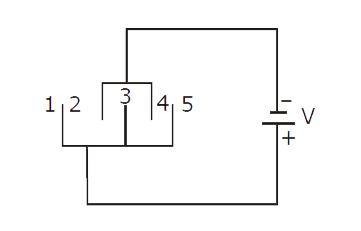 A∈0AVd,2∈0AVdB−∈0AVd,2∈0AVdC∈0AVd,−2∈0AVdD−∈0AVd,−2∈0AVd
A∈0AVd,2∈0AVdB−∈0AVd,2∈0AVdC∈0AVd,−2∈0AVdD−∈0AVd,−2∈0AVdFive identical plates each of area a are joined as shown in the figure. The distance between the plates is d. the plates are connected to a potential difference of V volt. The charge on plates 1 and 4 will be
 A−ε0AVd.2ε0AVdBε0AVd.2ε0AVdCε0AVd.−2ε0AVdD−ε0AVd.−2ε0AVd
A−ε0AVd.2ε0AVdBε0AVd.2ε0AVdCε0AVd.−2ε0AVdD−ε0AVd.−2ε0AVdThree identical metal plates of area S are at equal distances b as shown. Initially metal plate A is uncharged, while metal plates B and C have respective charges +Q0 and −Q0 initially as shown. Metal plates A and C are connected by switch K through a resistor of resistance R. the key K is closed at time t = 0

After the steady state is achieved, the charge on plate A is :AQ02B−Q02CQ03D−Q03
Five identical plates each of area a are joined as shown in the figure. The distance between the plates is d. the plates are connected to a potential difference of V volt. The charge on plates 1 and 4 will be

View SolutionFour identical plates, each having area A, are arranged as shown in Fig. Find the equicalent capacity of the structure between (A) and (B).
 .
.
View SolutionFour identical plates, each having area A, are arranged as shown in Fig. Find the equivalent capacity of the structure between (A) and (B).
 .
.
View SolutionFive identical conducting plates each of face area .A. are arranged as shown in figure. If a potential. difference of .V.0 is created between plate A and C then the charge on plate .E. will be [Given C=ε0Ad ]
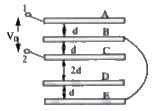
View SolutionThree identical metal square plates of surface area A of each side is arranged as shown in the figure.Plates 1 2 and 3 are given charges +20, -Q and -Q respectively. Find out the correct options A) Charge on the two faces of the middle plate are -2Q and Q B) Charge on the two faces of the middle plate are -Q and 0 C) Charge on the two faces of the left most plate are zero and 2Q D) Charge on the two faces of the right most plate are -Q and zero
View Solution

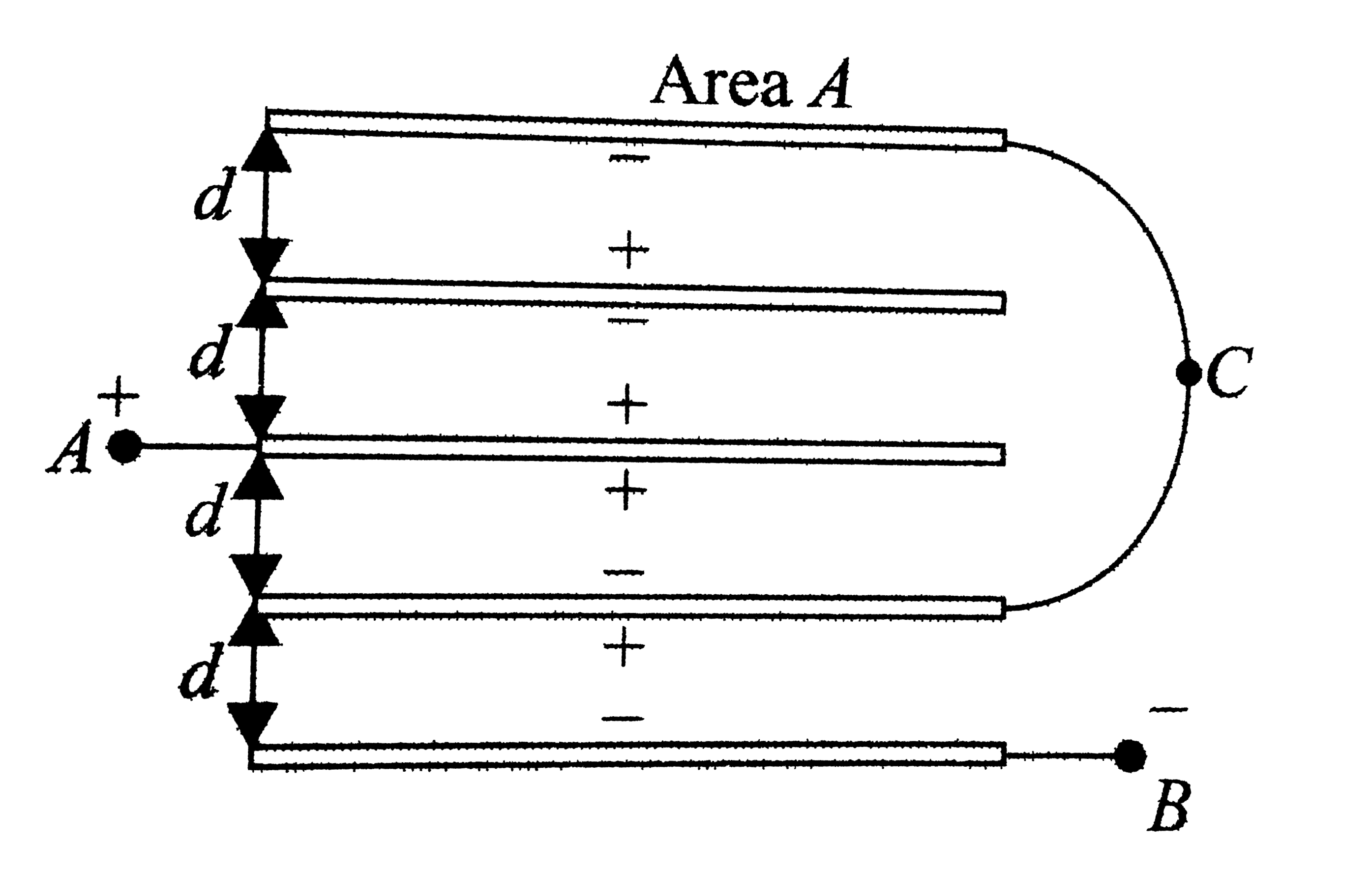 .
.